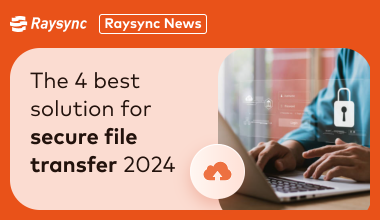How to Preserve Office Security When Staff Leave?
Employees are a valuable asset of an enterprise and the cornerstone of its development. With the development of science and technology, there are more and more Internet offices, and employees can work through computers and mobile phones, which significantly improves office efficiency. At the same time, the disadvantages of Internet collaborative work are also highlighted in the process of the rapid development of enterprises.

The flow of personnel is a common occurrence, but due to the popularity of Internet collaborative office, employees can obtain internal information anytime and anywhere, which poses an increasing threat to the internal information and core data of enterprises. In some resignation cases, we can see that some employees delete their own historical documents after resignation, which leads to business failure and delays work progress. In case of departing employees who steal the internal core secrets of the enterprise, take away the key technologies of the enterprise or resell information for competitors to obtain higher benefits, the enterprise will be hit hard and seriously affect the development of the enterprise.
In order to protect the information security of enterprises, we have made a lot of efforts. Today, we analyze two aspects: people and information, hoping to help enterprises pay attention to the hidden dangers of information security brought by personnel mobility and protect the security of assets.
Responsibility supervision
Background investigation: Job seekers need background investigation, which can be carried out after both parties agree. The main purpose of the investigation is to screen out employees with bad reputation records or threats to enterprises and do preliminary prevention work.
Signing Agreement: Enterprises can sign Confidentiality Agreement or Non-Competition Agreement when hiring employees, specify confidentiality content, responsible subject, confidentiality period, confidentiality obligation and liability for breach of contract, and strengthen employees' sense of responsibility.
On-the-job training: Carry out "confidential knowledge training" for new employees entering the company, and create clear and comprehensive strategies to accurately outline which information, data, and documents are the property of the company, emphasize the importance of information security, clarify the consequences of data leakage, and strengthen employees' sense of confidentiality.
Safe exit: Employees who leave the company are required to hand over all access rights to information and equipment to the company. In case of termination of work in HR's on-the-job employee platform, the IT department should quickly intervene and quickly cut off the equipment that may be used for authentication or allow the departing employee to connect. Similar security measures should be taken for the third-party organizations, partners, or suppliers that the company cooperates with, and quick measures are the basis for the company to avoid heavy losses.
Data protection
We can take responsibility for supervision for people and enterprises, and at the same time, we can also carry out protection measures for enterprises' own data and information.
Permission setting: E-mail, data documents, and other forms of Internet leakage account for a large proportion of data leakage incidents. In this respect, enterprises can divide the data types, grades, and employee permissions, and manage the access, download, edit, copy, delete, and other fine settings in terms of permissions. Here, we can refer to the scientific design of identity authentication, user grouping, file outgoing monitoring, etc.
File backup: In the era of big data, small groups, enterprises, companies, and large groups all produce a large amount of data in the process of development. Backup is the most direct protection for enterprises to deal with data loss and external attacks. In other words, there are traces of backup files.
Security of office environment: the emergence of mobile office software is both convenient and risky for employees. For employees who carry office equipment or need to use office equipment outside the company to work, enterprises should strengthen the encryption protection of sensitive data and monitor the data flow.
You might also like

Raysync News
February 26, 2024How to Share Long Videos? 2024
As the demand for high-quality, long-form video content increases, creators and professionals are faced with the challenge of how to efficiently share these large files. This article explores the complexities of how to share long videos and the solutions.

Raysync News
February 5, 2024What is Secure File Transfer and how to resolve it?
Data has become a valuable asset, however, every transmission of information can be an opportunity for attackers to steal data and compromise its integrity and confidentiality. Therefore, how to securely transfer files has become an important issue.
Raysync News
December 14, 2023Product Update | Raysync v6.7.8.3 is released!
Raysync is back with a new feature update, check v6.7.8.3 out and see what’s new!